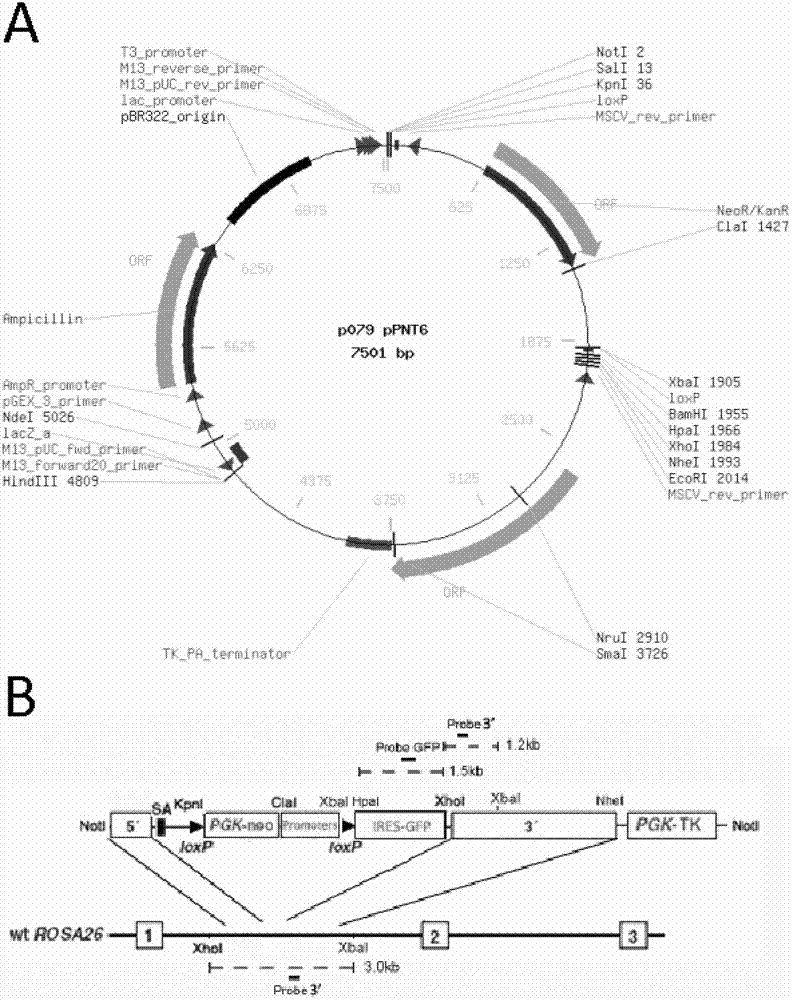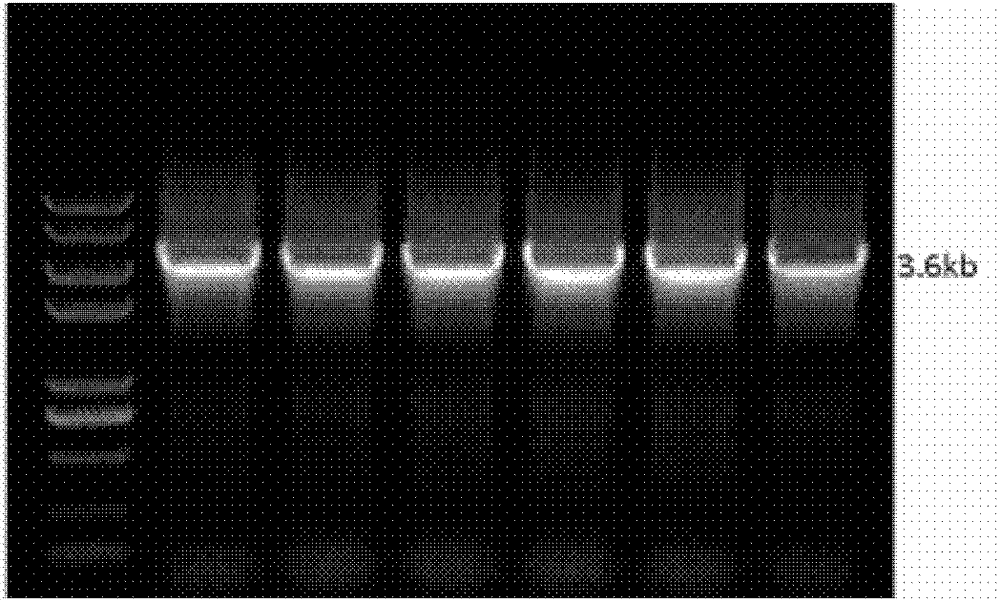Pig ROSA26 specific integration site and application thereof
An integration site and specific technology, applied in the field of genetic engineering, can solve the problems of rare transgenic large animals, lack of foreign gene integration sites, etc., and achieve the effect of efficient and specific targeting
- Summary
- Abstract
- Description
- Claims
- Application Information
AI Technical Summary
Problems solved by technology
Method used
Image
Examples
Embodiment 1
[0025] Example 1 Pig ROSA26 specific integration site
[0026] The pig ROSA26-specific integration site sequence is shown in SEQ ID NO.1, or under stringent conditions (Tm-10~15°C), it can hybridize with the DNA sequence defined in SEQ ID NO.1 and can promote the transcription and translation of the target gene DNA sequence, or a DNA sequence that is more than 90% homologous to the DNA sequence defined by SEQ ID NO.1 and that can promote the transcription and translation of the target gene.
Embodiment 2
[0027] Example 2 Obtaining of porcine ROSA26-specific integration sites
[0028] Design PCR primers based on the existing sequences on both sides of the gap, the sequence is: 5'-GGATCTAATTGGAGCTATAACTGCCAGC-3'(forward)5'-GCTGAGGGTCCCAAATGCTTTG-3'(reverse);
[0029] The PCR conditions are: 94°C for 3min; 94°C for 30sec, 60°C for 30sec, 72°C for 1min (30cycles); 72°C for 10min; 4°C for 1h.
[0030] The Rosa26 locus is located on the pig chromosome 13. Most of the sequence information has been given by the NCBI Sscrofa10.2 database, but 108 bp is missing at the 3' end of the first intron. Design primers based on the sequence information: obtain the missing sequence information by PCR, obtain the entire sequence of the promoter, first exon, first intron and second exon of the porcine Rosa26 gene, and apply for patents for these sequences , protected from mediating the expression of exogenous or endogenous genes, characterized by their DNA sequence. as follows:
Embodiment 3
[0031] Example 3 Targeting vector based on porcine ROSA26-specific integration site
[0032] Targeting vector based on porcine ROSA26-specific integration site ( image 3 ), its nucleotide sequence is shown in SEQ ID NO.2.
[0033] The construction method is as follows: use PPNT6 (company addgene, product number 11072) as the backbone to construct the porcine ROSA26 targeting vector.
[0034] PCR clone ROSA265' and 3' homology arms, the size is 1.4kb and 3.6kb respectively, the amplification primers are:
[0035] 5' homology arm, 5'-CGGGAGTGCGGCCCGCCCTGCGGC-3' (forward)
[0036] 5'-AGTAGATCCGTGCTTTTTAACCTATC-3'(reverse);
[0037] 3' homology arm, 5'-GAGTTTTACAGTCATCCCATTTGTAGACTTTTGC-3'(forward)
[0038] 5'-AGCTCTGATCCCGTGT TGTTGTGGCATAG-3' (reverse).
[0039] The 5' homology arm was connected at the NotI and KpnI restriction site, and the 3' homology arm was connected at the XhoI and NheI restriction site. Then, the pR26, CMV and EF1a promoters are connected into the Cla...
PUM
 Login to View More
Login to View More Abstract
Description
Claims
Application Information
 Login to View More
Login to View More - R&D
- Intellectual Property
- Life Sciences
- Materials
- Tech Scout
- Unparalleled Data Quality
- Higher Quality Content
- 60% Fewer Hallucinations
Browse by: Latest US Patents, China's latest patents, Technical Efficacy Thesaurus, Application Domain, Technology Topic, Popular Technical Reports.
© 2025 PatSnap. All rights reserved.Legal|Privacy policy|Modern Slavery Act Transparency Statement|Sitemap|About US| Contact US: help@patsnap.com



